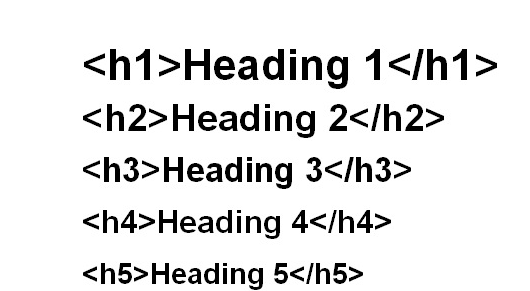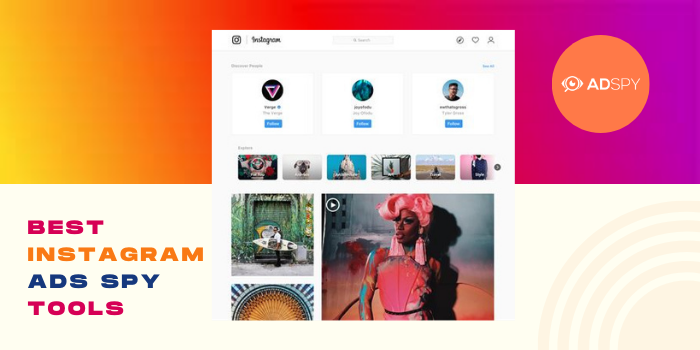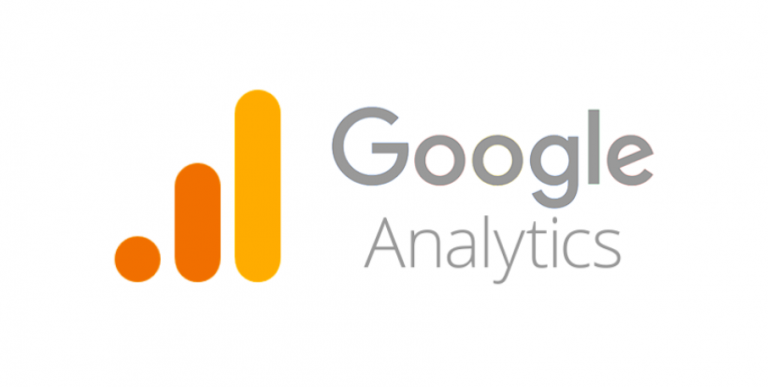
On average, 30.5% of the traffic that ecommerce websites generate comes from organic searches. Still, most of them struggle to rank well, even when it comes to long tail keywords related to products they are selling.
SEO is multi-faceted. However, one of the biggest issues we see with most of the websites we work with is that they don’t spend enough time dealing with the technical aspects of on-page optimization.
That’s why we decided to write this short guide to show you all the steps you need to take to optimize your site from a technical point of view.
Also Read : The Ultimate Guide To On-page Optimization For Ecommerce – Part 2
Site Speed
According to the latest research by SearchMetrics, site speed is by far the most important SEO factor for ranking.
Slow websites are penalized with bad rankings, mostly because they provide a bad customer experience. People want websites to load as quickly as possible so they can access the information they need ASAP.
But how fast should a website load? Preferably within two seconds.
Anything slower than that decreases your search ranking, as well as conversions and sales. Walmart found a 2% increase in conversions for every one second of improvement in its site speed.
So, how do you improve your site speed?
Use PageSpeed Insights To Find Problems –
The first thing you should do is identify how good or bad is your current situation. If your website already loads quickly, you can make any adjustments right away.
Go to PageSpeed Insights and enter your website URL:
We’re going to make a test with the ecommerce store Zumiez and see how well it performs when comes to speed.
This website receives a score of 78/100 for Desktop and 62/100 for Mobile.
You see a list of things that must be fixed, such as:
- Eliminate render-blocking JavaScript and CSS in the above/the-fold content
- Minify JavaScript
- Leverage browser caching
- Optimize images
Worth Reading : Ways To Improve Ecommerce SEO
When you expand on each issue, you’ll also see instructions on how to fix these issues:
If you want to see how fast your website is loading in terms of seconds, you can check the Pingdom Website Speed Test.
You can see that the Zumiez homepage has a load time of 897 miliseconds, which is pretty good.
Make a habit of testing your page speed occasionally as you make changes to your website. Sometimes a small thing that you add, such as a plugin, can dramatically decrease your loading speed.
Interesting Post : Best Magento UI To UX Tips
Choose Suitable Hosting –
The hosting that you use will greatly affect how fast your website loads.
This you should consider are:
Location Of The Hosting Provider –
If your website is hosted in Germany, it will probably load much faster for domestic visitors, but the speed will be slower for all international visitors.
Some hosting providers, like Bluehost, have good speed for international visitors. You can further optimize the speed of your site by using CDNs.
Related : Siteground Vs Bluehost For Magento Hosting
Hosting Type –
Shared hosting is the slowest hosting type. They usually store 1000+ websites on as single server. The problem with this type of host is that they slow down significantly when there is a dramatic increase in traffic.
When this happens, the best option is to upgrade to a VPS server (where you share the server with 10-20 websites) or buy a dedicated server (where you’re the only website hosted there).
You can read more on the topic of how hosting affects website speed here.
Related : Best Godaddy Alternatives : Solutions For Hosting
Use CDN –
The farther the server is located from a user, the slower the website will load. CDNs solve this problem by ensuring that your visitors are served by the closest server to them, thus providing the fastest loading speed possible.
CDNs are extremely helpful when it comes to software distribution, as well as hosting images, PDFs and videos. A good provider you can try is CDN77.
Related : Best CDN Providers To Speed Up Your Site
Resize Images –
Bigger images take more time to load. However, if you reduce their size too much, this will decrease their quality, which might affect your conversion rates and sales.
When it comes to ecommerce, it’s best to keep your image file sizes below 70KBs.
It’s important to note that you can reduce image sizes without compromising their quality.
The easiest way to do this is to use Adobe Photoshop. Click on the “Save for Web” option and then adjust the file size and choose highest quality available.
Minify HTML, JavaScript and CSS –
Minification is the process of removing unnecessary or redundant data without affecting how the resource is processed by the browser.
This process could include altering code comments or formatting, removing unused code, using shorter variable and function names, etc.
To minify HTML, you can use PageSpeed Insights to generate an optimized version of your HTML code.
Run the analysis against your HTML page and browse to the “Minify HTML” rule. Click on “See optimized content” to get the optimized HTML code.
For minifying CSS, you can try YUI Compressor and cssmin.js. For minifying JavaScript, try the Closure Compiler, JSMin or the YUI Compressor.
Useful Post : How To Optimize Your Product Pages For Higher Conversions
Browser Caching –
This is one of the best ways to improve website speed for repeat visitors. When a user visits a website for the first time, the browser must request that all images, text, scripts, etc. load on the page.
They are saved in the browser’s cache so that when the user visits again, the browser only needs to download the new elements on the page.
By using browser caching, you will be able to significant speed up the loading time for repeat visitors.
A few tools you can use are:
- Local storage – allows you to store data in the browser instead of your local server
- Application cache – develops web apps that can run offline for better offline access to resources.
- Quick cache – a caching plugin for WordPress that allows you to speed up your website.
Worth Reading : How To Increase Time On Site For Your Ecommerce Store
Image Optimization
Besides reducing the file size of your images, there are a few more things that you can do to improve your on-site search engine optimization.
Choose One Primary Keyword –
For the most effective optimization, choose only one primary keyword for each image. This should be a word or a phrase that people are most likely to search for.
Check out the ecommerce keyword research guide to learn how to find the right keywords for your online store.
How To Name Image Files –
Never upload images on your website with their original names.
Most of the time, if you upload your images straight from a camera, they will be named something like “IMG_1987.JPG” or “FH42__29405.1407960009.1280.1280.jpg.”
Unfortunately, these names don’t tell Google anything because they don’t contain keywords. Instead, you want your images to be named something like “tea-coffee-basket-hamper” so Google can identify what the picture contains.
Related : Ecommerce Product Image Optimization Examples To Boost Conversions
Include Alt tags –
The purpose of alt tags is to display information about an image in case it’s not successfully loaded by the browser. Since the tag is used to describe the image, Google considers this an important ranking factor.
This is the most important metadata for image optimization. If you want to do it the right way, you should consider the following:
- Character length – the alt tag should be at least 125 characters long
- Use of keywords – you don’t have to include keywords; it’s more important to describe the image. However, most of the time, you’d naturally use those keywords in the descriptive text.
A typical alt tag should look something like this:
alt = “Picnic Hamper 4 person Tea Coffee Picnic Basket”
Include Title Tags –
These are the visual captions you see when you hover your mouse over an image.
The purpose of this tag is to let the user know what the picture is about. Title tags are not as important as alt tags, but you should still use them to maximize your potential.
If you want to learn more about image optimization, check out the blog post 20 Image Optimization Tips That’ll Drive You More Sales.
Useful Post : How To Use Google Analytics To Increase Ecommerce Conversion Rates
Keyword-friendly URLs
The structure of your URLs matters a lot it terms of SEO. It is one of the factors that search engines use to determine PageRank.
How to write the perfect URLs:
Include Keywords In URLs –
links like http://www.pets.com/show_a_product.php?product_id=7 are bad for both users and search engines. Neither of them can understand what the link is about before visiting the URL.
One way of writing more friendly URLs is including keywords. Just like you should do with images, focus on including one primary keyword for each sublevel.
For example:
http://www.pets.com/parrots – with the main keyword “parrots”
and
http://www.pets.com/parrots/norwegian-blue/ – with main keywords “parrots” and “Norwegian blue”.
Related : The Ultimate Guide To Ecommerce SEO – Part 1
Consider Length & Structure –
Your URLs must have a well-defined structure to help visitors and search engines understand which part of the website they are visiting and how pages are related to each other.
For example:
Let’s say that you’re selling notebooks, and your domain is notebook.com.
You’d probably have category pages for brands. These would look something like this:
Notebook.com/Lenovo
Each brand has a series, so you would create subcategory pages like this:
Notebook.com/Lenovo/Y50
At the same time, each series has specific models which you can list on product pages like this:
Noteboook.com/Lenovo/Y50/y50-70s
Here is an example of how you should not create a product page link:
Notebook.com/notebook-lenovo-y50-70-s- quad-core-intel-core-i7-4720hq-2-60-3-60-8-gb-1-tb-sata-5400-rpm-8-gb-sshd-nvidia-geforce-gtx-860m-4-gb-free-dos-black-lenovo-y50-70-59442626/pd/DDLC7MBBM/
Title Tags
These tags are used by search engines to describe the page in a search result. They can also be seen at the top of the web page.
These are extremely important, not only for SEO and ranking, but also for click-through rates. Titles that best represent the searcher’s intent tend to receive higher CTRs.
The Perfect Length –
Titles must be less than 70 characters. Anything after that is completely ignored by search engines.
Keyword Placement –
Start with your most important terms first, and then continue with the brand name.
Related : The Ultimate Guide To Ecommerce SEO – Part 2
Include Free Shipping In Title Tags To Increase Clicks –
Customers nowadays expect every ecommerce site to offer free shipping. Studies shows that mentioning it in the title help you increase CTRs from search results and subsequently improve your rankings.
Highlight Discounts –
Discounts also tend to increase CTRs from search results.
If you want to learn more about writing title tags, check out this guide by Search Engine Watch.
Interesting Read : SpyFu Vs Semrush Vs Moz Pro – Best SEO Tool
Meta Description
The Meta description is the snippet of information below the title tag in any given search result. Its purpose is to further describe the page for the searcher. This allows them to decide which webpage bests suits their needs.
Well-written meta descriptions can help you receive more clicks from search results and improve your SEO rankings.
To write better meta descriptions, you should consider the following tips:
The Perfect Length –
Keep it under 155 characters. Anything after that will be cut off.
Make It Specific And Relevant –
Describe what you have to offer so the user can understand what they can expect on the page. Include your main keywords in the description as this increases CTRs and give important details that are important for your user.
Include A Value Proposition And A Call To Action –
What is it that you offer that is different from any other store? If you’re currently running a promotion that can save the user some money, tell them about it in the description.
List Your Phone Number –
This will cause more people to click and dial your number. Closing the deal over the phone will be much easier than via web. Just be sure you have someone to pick it up!
For more information, check out the meta description guide for ecommerce.
Worth Reading : Ecommerce SEO Mistakes You Cannot Overlook
Heading Tags
Heading tags are used to describe different sections of a webpage, and they also help make pages more user-friendly.
Search engine spiders crawl through heading tags to better understand the page content. They check for keywords and the relevance between the heading and the rest of the text.
The most important heading tag is h1, and you should never skip it on any page. It should include a basic description of the page content.
For a product page, the product title will usually have the h1 tag.
The “about this item” subsection will usually have the h2 tag.
To learn more about heading tags, check out the ecommerce guide to h1-h6 tags.
XML Sitemap
A sitemap is a file that contain links to all the pages on your website. Its main function is to support search engines so they can better crawl and index all the pages on your site.
It’s important to remember that you shouldn’t depend exclusively on sitemaps for search engines to index all of your URLs. You must naturally build internal links between all pages.
How To Submit A XML Sitemap –
Go to Google Webmaster Tools.
In the left sidebar, click on “Crawl” and then “Sitemaps.”
Click the “Add/Test Sitemap” button in the top right corner.
Enter “/system/feeds/sitemap” into the text box that appears.
Click “Submit Sitemap.”
Visit this link to learn more about how to submit XML sitemaps for your ecommerce site.
Robot.txt File –
You can use Robot.txt to let search engines know if there are pages on your site that you don’t want to be ranked. It’s important to remember that these pages can still be read by search engines, but they simply won’t be listed in results.
Explore : Best Tools For Your Ecommerce Business
In Conclusion
If you follow and implement all the steps in this guide, you’ll see a drastic increase in your search engine rankings and traffic.
If you want to learn more about how to build links for your ecommerce site, check out our blog post How to Create Backlinks for Your Ecommerce Store.
Was this guide helpful for you? Did you find anything that you’ve been missing in your SEO strategy? Let us know in the comments below.































